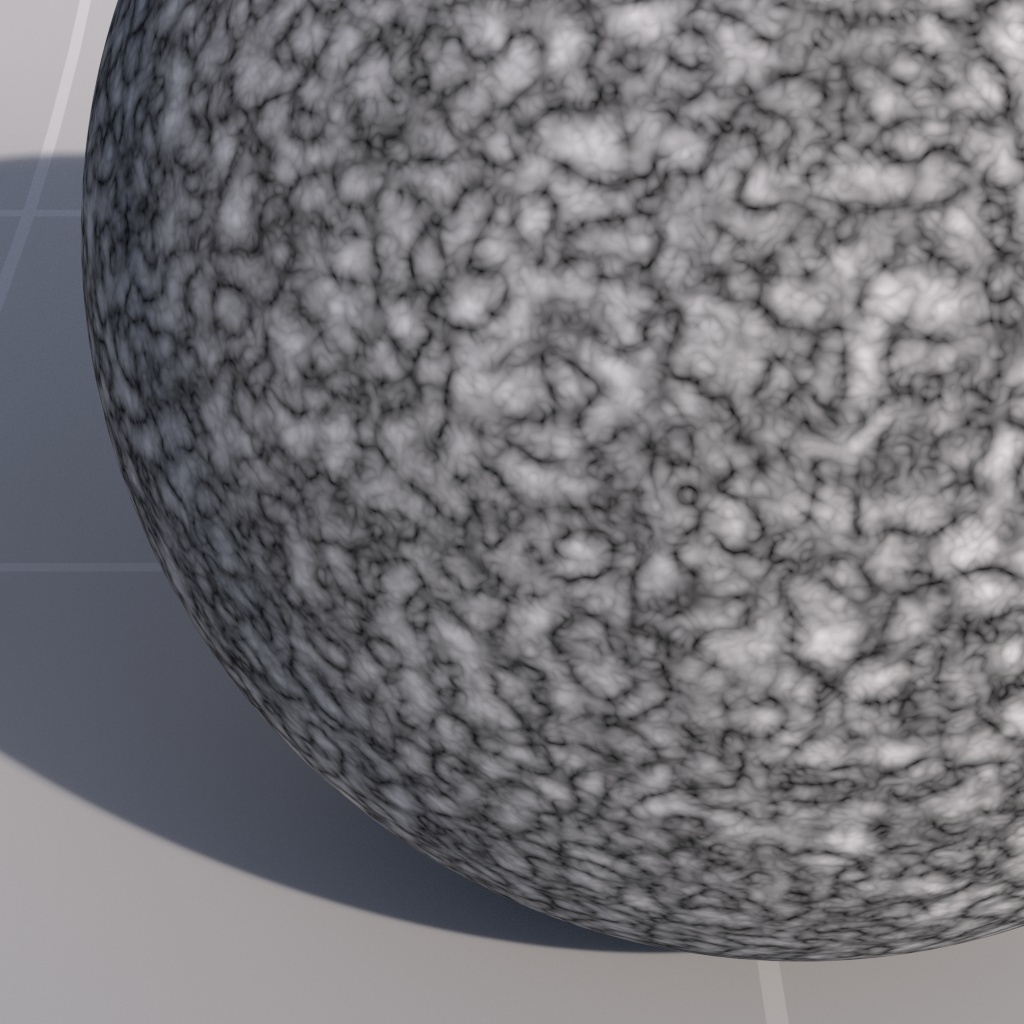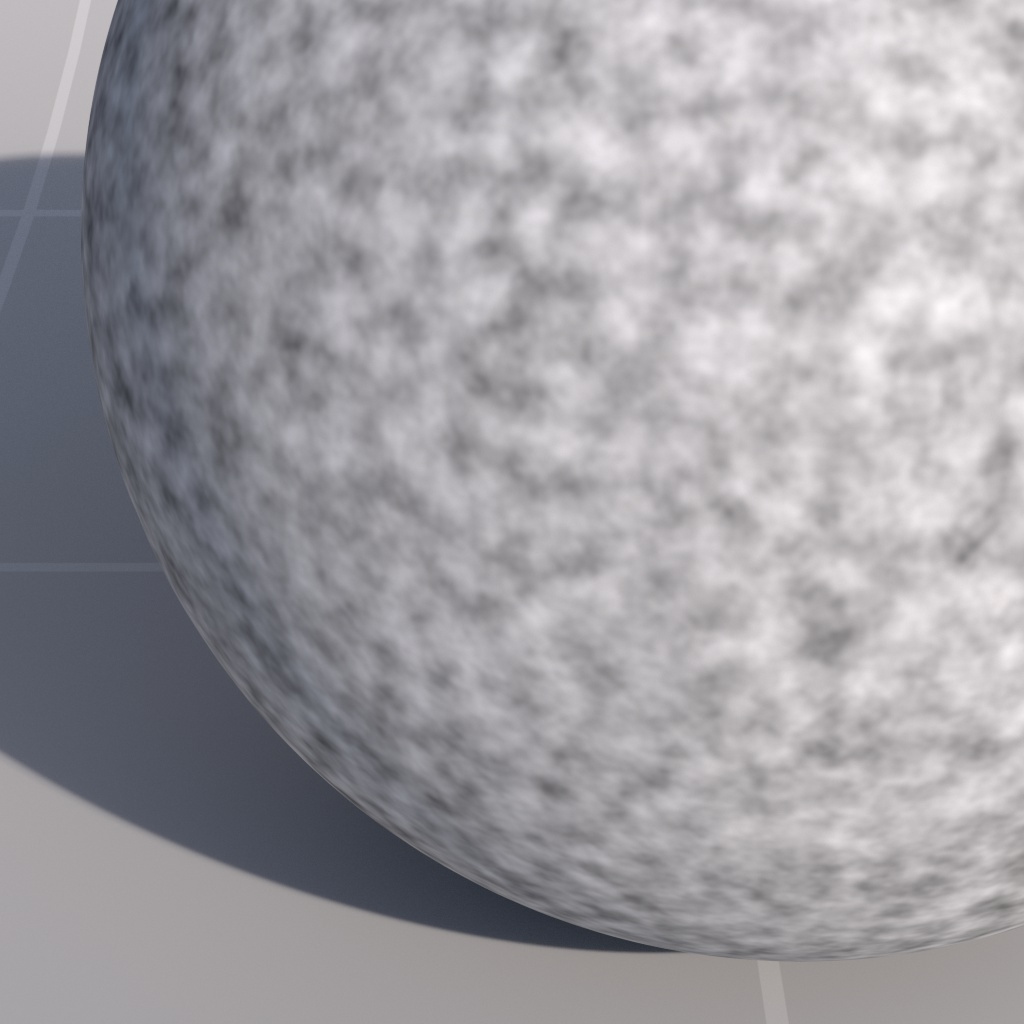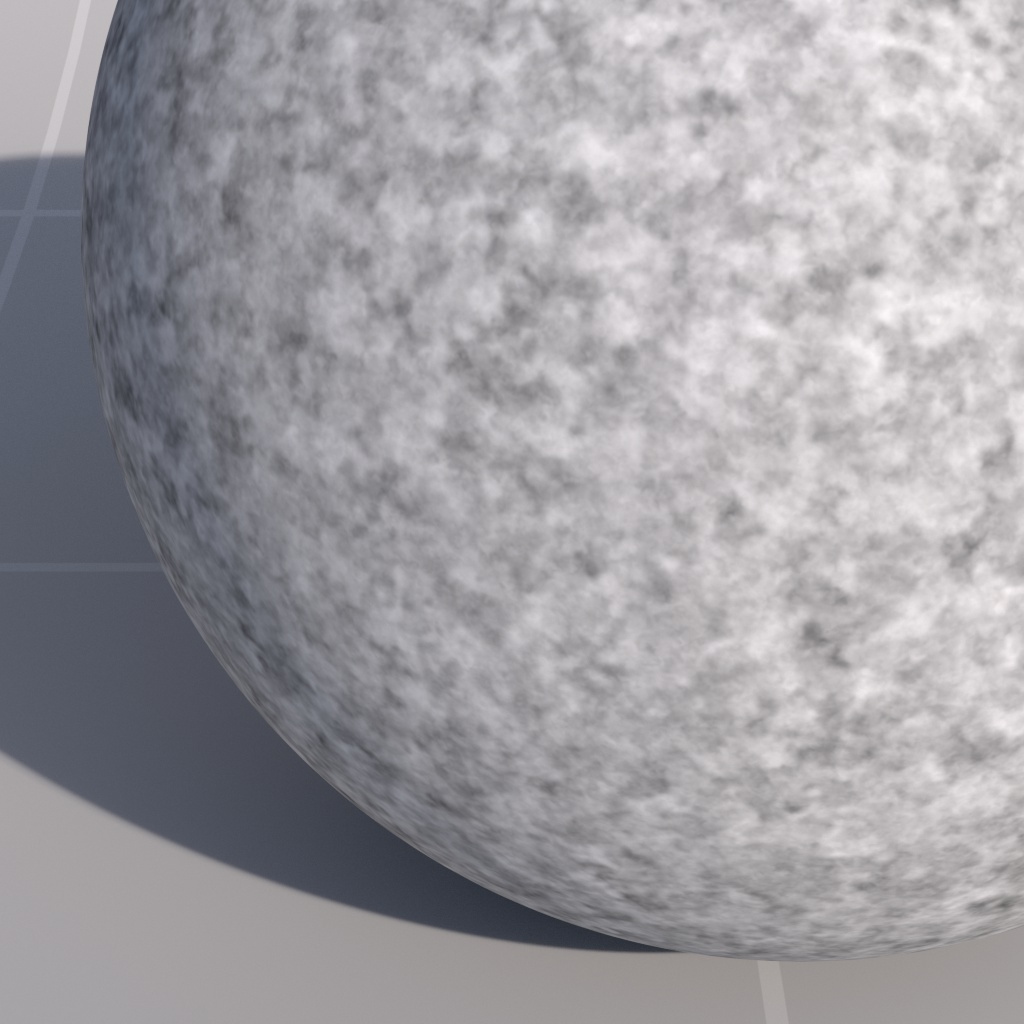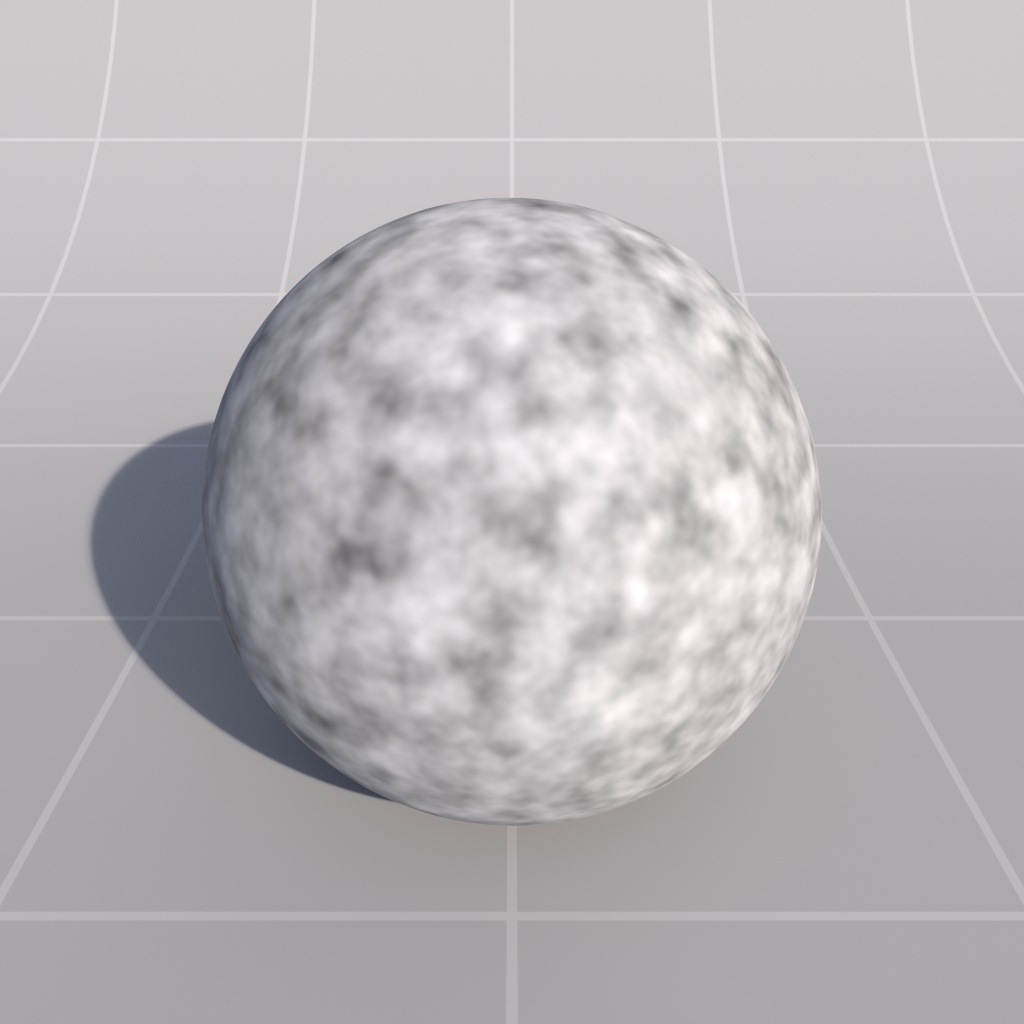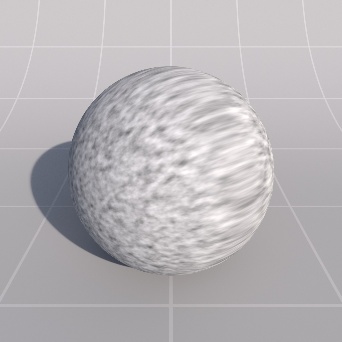Table Of Contents
Introduction
This shader generates procedural noise, useful for adding surface detail, special effects and driving bump-maps.

Color
General
This tab allows you to control how the internally computed noise is turned into color for output.
Color 1
This is the color that is output where the computed noise is not present.
Color 2
This is the color that is output where the computed noise is present. Where noise is partially present, the output will be a blend between Color 1 and Color 2.
Invert
This swaps Color 1 and Color 2 internally, essentially inverting the noise effect.
|
|
|
|
|
Color 1: Black Color 2: White Invert: Disabled |
Black White Enabled |
Red Blue Disabled |
Remap
Min
This is the minimum allowed value of the internally computed noise.
Max
This is the maximum allowed value of the internally computed noise.
Bias
This value is a contrast control that allows you to bias the output towards Color 2 when the bias is over 0.5 and towards Color 1 when under 0.5.
|
|
|
|
|
Min: 0.25 Max: 1.0 Bias: 0.5 |
0.5 |
0.7 |
|
|
|
|
|
|
|
|
|
Min: 0.0 Max: 1.0 Bias: 0.5 |
0.1 |
0.9 |

Noise
This tab allows you to control how the noise is generated.
General
Noise Type
This lets you choose between different noise generators internally. The options are as follows:
- Fractal
- Turbulence
- Cell
|
|
|
|
| Noise Type: Fractal | Turbulence | Cell |
Fractal/Turbulence
The options below apply to 'Fractal' and 'Turbulence' Noise Types only.
Complexity
This option describes how many iterations or 'octaves' will be used to generate the noise, with higher iterations resulting in more complex, detailed noise and slightly slower shading.
|
|
|
|
|
Complexity: 1 Noise Type: Fractal |
2 |
4 |
|
|
|
|
|
|
|
|
|
Complexity: 1 Noise Type: Turbulence |
2 |
4 |
Amplitude Gain
This option describes how the noise strength diminishes with each iteration.
|
|
|
|
|
Amplitude Gain: 1 Noise Type: Fractal |
2 |
4 |
|
|
|
|
|
|
|
|
|
Amplitude Gain: 1 Noise Type: Turbulence |
2 |
4 |
Frequency Scale
This option describes how the noise frequency, or detail, increases with each iteration. Lower values result in softer looking noise.
|
|
|
|
|
Frequency Scale: 1 Noise Type: Fractal |
2 |
4 |
|
|
|
|
|
|
|
|
|
Frequency Scale: 1 Noise Type: Turbulence |
2 |
4 |
Distortion
Controls the amount of distortion applied to the coordinates that define the noise seeds, to create plasma-style effects.
Distortion is used in conjunction with Distortion Scale, Distortion Scale must be set to a value other than 0 in order for it to have any effect.
|
|
|
|
|
Distortion: 0 Distortion Scale: 2 Noise Type: Fractal |
1 |
2 |
|
|
|
|
|
|
|
|
|
Distortion: 0 Distortion Scale: 2 Noise Type: Turbulence |
1 |
2 |
Distortion Scale
Controls the amount of distortion plasma effect.
|
|
|
|
|
Distortion Scale: 0 Distortion: 2 Noise Type: Fractal |
2 |
5 |
|
|
|
|
|
|
|
|
|
Distortion Scale: 0 Distortion: 2 Noise Type: Turbulence |
2 |
5 |
Time
The options below apply to 'Fractal' and 'Turbulence' Noise Types only.
Source
Allows you to control how the noise is affected over time. The options are as follows:
- None - time is not factored in to the noise computation
- Constant - the current frame time is used to bias the noise computation
- User - a user-defined time is used to bias the noise computation
Below are example images demonstrating the Redshift Noise animated over time:
|
|
|
|
Noise Type: Fractal |
Turbulence |
Consant Scale
This is a scale that is applied to the current frame time. Only applicable when Source is set to 'Constant'.
User Time
This is a user-defined time value. Only applicable when Source is set to 'User'.

Coordinates
This tab allows you to control the seeds for the noise, which is generated from the coordinates of the surface that is being shaded.
General
Overall Scale
This is an overall scale applied to the coordinates of the surface that is being shaded, with larger values resulting in 'smaller' noise and smaller values resulting in 'bigger' noise.
|
|
|
|
|
Overall Scale: 5 Noise Type: Fractal |
20 |
50 |
|
|
|
|
|
|
|
|
|
Overall Scale: 5 Noise Type: Turbulence |
20 |
50 |
|
|
|
|
|
|
|
|
|
Overall Scale: 5 Noise Type: Cell |
20 |
50 |
Scale
This is a scale that is applied to the coordinates of the surface that are being shaded, for each x, y and z component, enabling you to bias the 'size' of the noise on each axis.
|
|
|
|
|
|
Scale X / Y / Z: 10 / 10 / 10 Noise Type: Fractal |
1 / 10 / 10 |
10 / 1 / 10 |
10 / 10 / 1 |
Offset
This is an offset that is applied to the coordinates of the surface that are being shaded, for each x, y and z component, enabling you to offset the placement of the noise on each axis.




























